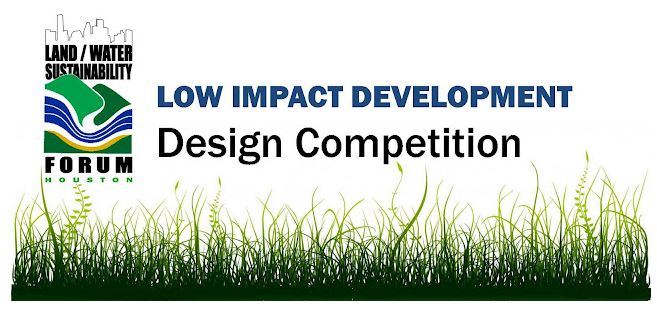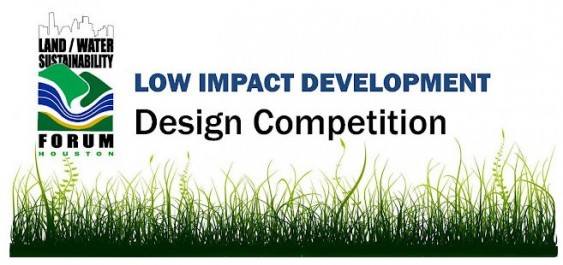Green stormwater engineers have joined the ranks of fashion designers, Donald Trump wannabes, and gourmet chefs. That’s right, there are now contests for designing the best environmentally friendly stormwater solutions.
The practice appears to have gotten its start in Houston with a contest that drew 230 design professionals, offered $45,000 in cash prizes, and even has videos on YouTube. It’s not exactly American Idol, but c’mon, polluted runoff is a tougher sell than pop songs.
Like its flashier counterparts, the Houston contest is being lauded as a great success, spawning a free, three-part webcast that instructs other cities and communities eager to create their own competitions. The first web installment rolls out June 21, with the other two coming in July and August. The webcasts are being offered through the nonprofit Water Environment Federation.
Why host a contest to see who can design the best rain gardens and permeable pavement? The Water Environment Federation puts it like this:
… the Houston (Low Impact Development) Design competition, which took place in 2010 … effectively moved LID from a virtually unknown methodology to a rapidly growing mainstream tool in local development.
It accomplished this by demonstrating that green stormwater infrastructure can be cheaper than conventional approaches. And it gave contest participants and observers a real-life chance to see how low-impact development is done. It created excitement and buzz around an environmentally and economically sustainable alternative to handling polluted runoff. It inspired people.
If you want to find out how a little ol’ contest in Texas accomplished all of this, there’s lots of information about the Houston match up available from the Houston Land/Water Sustainability Forum, which organized the competition. Their site has great supporting documentation about the event, including a summary white paper.
The contest was organized around three design categories, each with a $15,000 prize:
- Suburban Residential Development
Creating a green stormwater solution for a 640-acre master planned community called “Ventana Lakes” for which a traditional design had been completed, but not built.
- Urban Redevelopment
Designing a new pedestrian thoroughfare in the redeveloping East Downtown Houston. The project encompassed six blocks connecting the entrance to the new downtown soccer stadium and a proposed park.
- Green Roadway Project
Developing a sustainable road section that could serve as a model for new Harris County standards that would be used when expanding a typical two-lane section with ditches on either side, to a four lane road. This project was located in a heavily industrialized area near Houston’s Ship Channel.
The competition’s 22 teams each included at least one civil engineer, one architect (or transportation engineer in the case of the roadway project), and one landscape architect. Teams were encouraged to diversify their ranks with planners and other relevant disciplines. According to the post-event white paper, this interdisciplinary approach was an important aspect:
This focus on the integrated team helped create and deepen interdisciplinary relationships for all the teams and was one of the most remarked upon elements by competitors during post-competition debriefings.
The design teams were provided with detailed information about the three sites. The locations were not chosen because they were easy spots for installing low-impact development technologies, but because they were great for demonstrating the potential for green solutions.
Flat topography, minimal existing vegetation and heavy clay soils were the norm on all three sites. If LID could be adapted to work in these conditions, in Houston’s climate, it could work anywhere.
The winners were chosen by panels of esteemed judges based on multiple goals including minimizing the amount of impervious surface, speeding the infiltration of water, conserving natural resources, reducing maintenance costs, and reducing or eliminating the need for clean water for irrigation.
Another goal of the contest was to provide a cost comparison for green versus traditional “gray” stormwater infrastructure. Overall, the green designs came out ahead.
The average cost reductions for the green solutions for the Suburban Residential project was 17 percent for the teams that made it to the finals.
The teams working on the Urban Redevelopment project reportedly found it difficult to come up with an accurate cost for the traditional development for comparison. The cost differences in this category ranged from a 2 percent savings, to the green alternative costing 12 percent more than a conventional approach.
In the Green Roadway category, the average cost savings for the green designs were 11 percent for all of the teams and 13 percent for the four finalists. However, the teams didn’t include the cost of offsite detention for the runoff, so the savings over a conventional street-and-gutter system would be even greater in practice.
So the teams came up with beautiful designs for projects that would benefit communities, the environment, and — in most cases — the bottom line. So have any of them been built?
Not exactly. I contacted Robert Adair, who serves as steering committee chairman for the Houston Land/Water Sustainability Forum for an update. He said that the Green Roadway hasn’t been built, but that Harris County did complete another LID-based roadway project at Birnamwood Drive, plus other green roads are in the works. Additionally, the city of Houston is building its own green streets. The Urban Redevelopment project, he said, is likely to be built, but multiple property owners are involved, slowing the execution. However, a new soccer stadium has been completed at one end of the promenade and progress on the project should pick up. The depressed housing market put the nix on the Suburban Residential project, but the developer involved has used the green design approach in other, smaller developments.
Regardless, Adair said that the competition has inspired numerous green designs for treating polluted runoff in the Houston area. And now Dallas/Fort Worth is organizing its own contest.
The boom in LID-based projects in Houston has been truly hard to imagine. There are dozens of projects that have either been completed or are in construction, as well as many more in the design and development stages. They range from small parcel projects to what’s been said to be the largest private construction project in the country, and everything in between. Projects include not only Green Roads and Green Streets, but all types, including public buildings (library, school, university, community center, park, fire station), residential (multi-family, retirement, urban town home, suburban residential, master planner community), commercial (commercial/industrial park, industrial plant, office campus) and more.
Considering that there were essentially none prior to the competition, it’s been fun.











